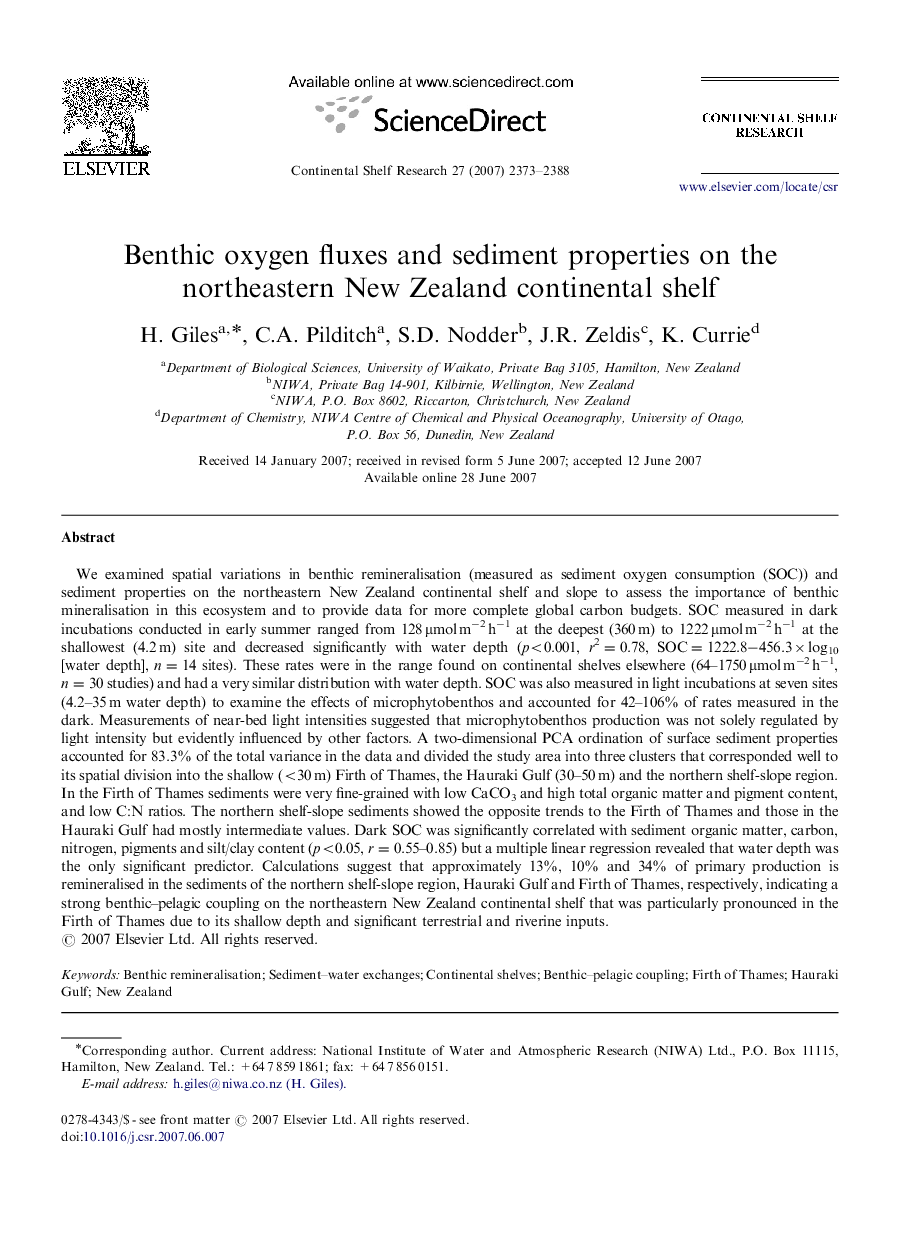| کد مقاله | کد نشریه | سال انتشار | مقاله انگلیسی | نسخه تمام متن |
|---|---|---|---|---|
| 4533674 | 1325207 | 2007 | 16 صفحه PDF | دانلود رایگان |

We examined spatial variations in benthic remineralisation (measured as sediment oxygen consumption (SOC)) and sediment properties on the northeastern New Zealand continental shelf and slope to assess the importance of benthic mineralisation in this ecosystem and to provide data for more complete global carbon budgets. SOC measured in dark incubations conducted in early summer ranged from 128 μmol m−2 h−1 at the deepest (360 m) to 1222 μmol m−2 h−1 at the shallowest (4.2 m) site and decreased significantly with water depth (p<0.001, r2=0.78, SOC=1222.8−456.3×log10[water depth], n=14 sites). These rates were in the range found on continental shelves elsewhere (64–1750 μmol m−2 h−1, n=30 studies) and had a very similar distribution with water depth. SOC was also measured in light incubations at seven sites (4.2–35 m water depth) to examine the effects of microphytobenthos and accounted for 42–106% of rates measured in the dark. Measurements of near-bed light intensities suggested that microphytobenthos production was not solely regulated by light intensity but evidently influenced by other factors. A two-dimensional PCA ordination of surface sediment properties accounted for 83.3% of the total variance in the data and divided the study area into three clusters that corresponded well to its spatial division into the shallow (<30 m) Firth of Thames, the Hauraki Gulf (30–50 m) and the northern shelf-slope region. In the Firth of Thames sediments were very fine-grained with low CaCO3 and high total organic matter and pigment content, and low C:N ratios. The northern shelf-slope sediments showed the opposite trends to the Firth of Thames and those in the Hauraki Gulf had mostly intermediate values. Dark SOC was significantly correlated with sediment organic matter, carbon, nitrogen, pigments and silt/clay content (p<0.05, r=0.55–0.85) but a multiple linear regression revealed that water depth was the only significant predictor. Calculations suggest that approximately 13%, 10% and 34% of primary production is remineralised in the sediments of the northern shelf-slope region, Hauraki Gulf and Firth of Thames, respectively, indicating a strong benthic–pelagic coupling on the northeastern New Zealand continental shelf that was particularly pronounced in the Firth of Thames due to its shallow depth and significant terrestrial and riverine inputs.
Journal: Continental Shelf Research - Volume 27, Issue 18, 1 November 2007, Pages 2373–2388